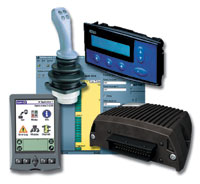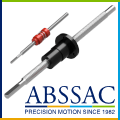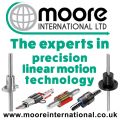
Posted to News on 28th Apr 2011, 00:00
Safety holds the key to improved business performance
John Hill and Peter Soderberg of Parker Hannifin look at some of the safety considerations for hydraulic and pneumatic systems.

A range of often unique characteristics makes hydraulic and pneumatic systems indispensible in many industrial applications. These characteristics include high operating speeds, load carrying capability and sheer power. However, these same characteristics can also make such systems extremely dangerous if they are not handled appropriately, with liquids and gases that function at high pressures, temperatures and flow rates having the potential to injure or kill. Taking appropriate steps to ensure equipment safety during design, assembly, operation and maintenance must therefore be a top priority for any organisation that makes use of such systems.
Effective safety makes sound business sense too. Equipment that is designed to operate safely will also tend to be inherently efficient and reliable; being as resistant to the small failures that create costly delays and disruptions as to the big ones that cause accidents. Safety in pneumatic and hydraulic systems begins with a good understanding of the risks associated with each type of technology. Those risks are not always obvious. For example, modern hydraulic lines can contain oil at operating pressures of up to 350 bar, meaning that even a pin-hole sized leak could inject oil under unprotected skin. Clearly this type of risk has implications for hose specification and replacement schedules, as well as for safe maintenance practices
Current safety legislation
Most modern installations will have been designed to meet the requirements of current safety legislation, including the relevant ISO standards, the Pressure Systems Safety Regulations and the Pressure Equipment Directive (PED). There is, however, still much older equipment in use today that was designed before the latest regulations were introduced, and which may not include appropriate failsafe technology. Particular care should be taken when maintaining or modifying such equipment to ensure that it is brought into line with today's standards.
Manufacturers of hydraulic and pneumatic equipment should be considered a primary resource for safety-related information when designing or modifying equipment. Not only do leading manufacturers like Parker Hannifin continually invest in the development of technologies that improve equipment reliability and system safety, they also offer dedicated customer support to simplify the task of safety management for design, production and maintenance engineers alike.
It should be noted that many technologies serve multiple roles, simultaneously enhancing system performance, functionality and safety. Hydraulic accumulators are a good example. The high-pressure oil they hold can smooth out power demands in the system, improving overall efficiency; they can also act as a fail-safe source of energy in the event of an emergency.
Modern innovations make accumulators even safer to use, however. For example, accumulator safety blocks incorporate shut off, pressure limiting and pressure release functions in a single unit. With fewer connections and integrated controls, accumulator safety blocks reduce the potential for injury and enable new and existing applications to be brought into line with the latest safety regulations with minimal investment.
In pneumatic systems, similar measures can be taken to ensure that equipment shuts down and restarts safely in the event of a loss of power. Dump and soft-start valves enable pressure to be built up slowly when systems are turned back on after a routine or emergency shut down, eliminating the rapid movement of equipment from a sudden release of stored energy. Pneumatic cylinders can also be fitted with spring loaded locking mechanisms that allow pistons to be locked in place while maintenance is carried out, or in the event of a catastrophic system pressure failure. These elements don't only improve safety, they also help to prevent damage to equipment and materials in the event of unexpected equipment stoppages.
Software-based controllers
The evolution of advanced control technologies also offers combined performance and safety benefits for machine designers. Software-based controllers, like Parker's IQAN system for mobile hydraulics, make both the design and operation of equipment simpler, safer and more cost effective. Using these systems, designers can integrate machine control and safety functions within the same robust, easy-to-program arena. Modern systems even allow designers to simulate machine behaviour in a virtual environment before build starts. System testing also can be carried out virtually, enabling designers to gain an in-depth understanding of the performance limits of their equipment before production begins.
The IQAN system can also be used as part of a predictive maintenance programme to monitor the ongoing operating parameters of hydraulic and associated components, enabling maintenance to be planned in advance and only to be carried out on those parts of the overall system on which it is required. The same data can then be used to develop new or improved functionality, which can then simply be downloaded by end users. With increasing emphasis being placed on operator comfort and safety, the simplicity of the technology allows end users to program the functionality of controls for different tasks, and to reduce the complexity of levers, gauges or switches required. The controls can even be configured so that they change characteristics depending on who is operating the machinery, thereby maximising efficiency and reducing the risk of accidents; settings can be locked to ensure operator safety.
Other technologies allow safety to be maintained in a way that minimises the impact on overall productivity. In portable pneumatic equipment, the failure of a hose or connector can produce a whiplash hazard, as high volumes of escaping air make hoses thrash around, causing injury or damage. Air fuse technology, which shuts off the air supply if flow rates exceed a preset limit, provides a simple and reliable way to prevent such problems, ensuring that equipment complies with safety legislation.
It is the responsibility of equipment designers to ensure that they make use of hydraulic and pneumatic systems safely. Today's advanced components and systems help them to do this without compromising the cost, efficiency or productivity of equipment. In fact, advances in safety and performance increasingly go hand in hand.
Cylinder Divison
Tachbrook Park Drive
CV34 6TU
UNITED KINGDOM
01926 833839 (direct)
















